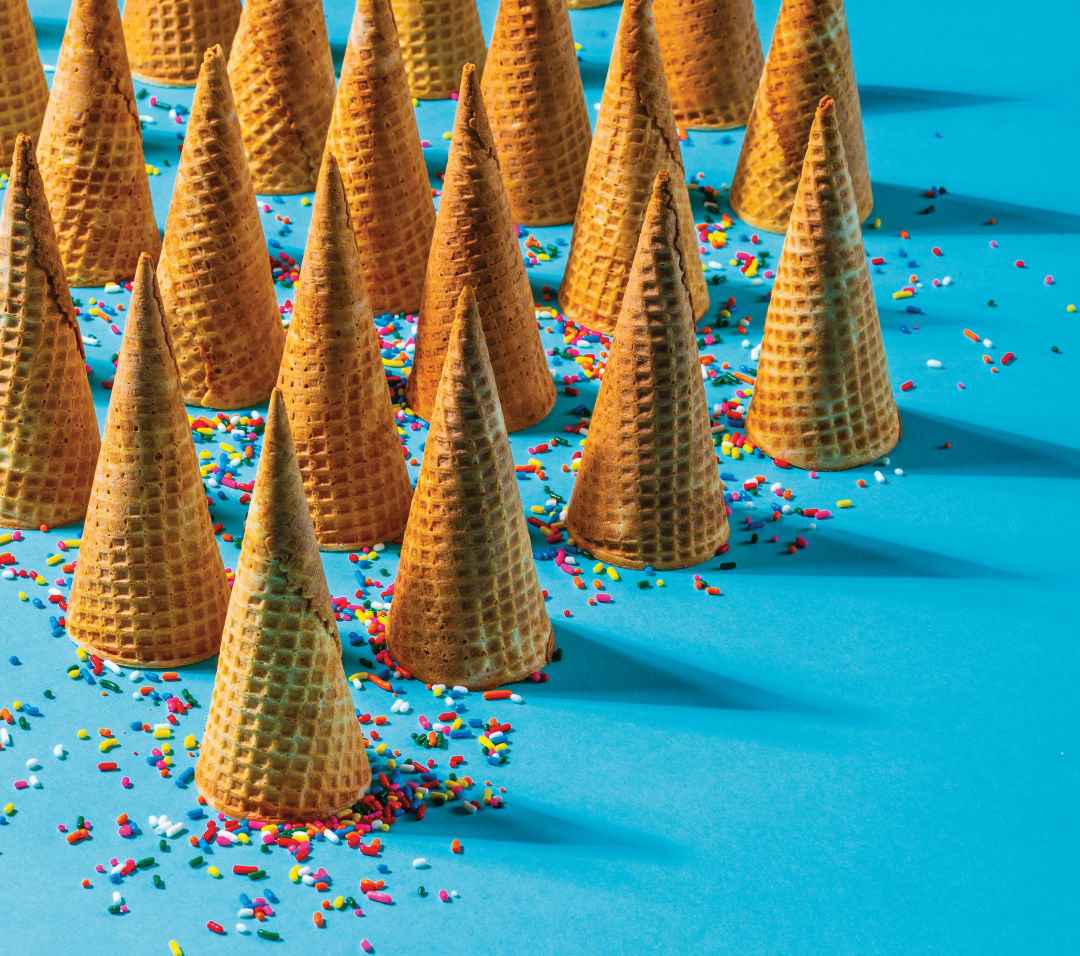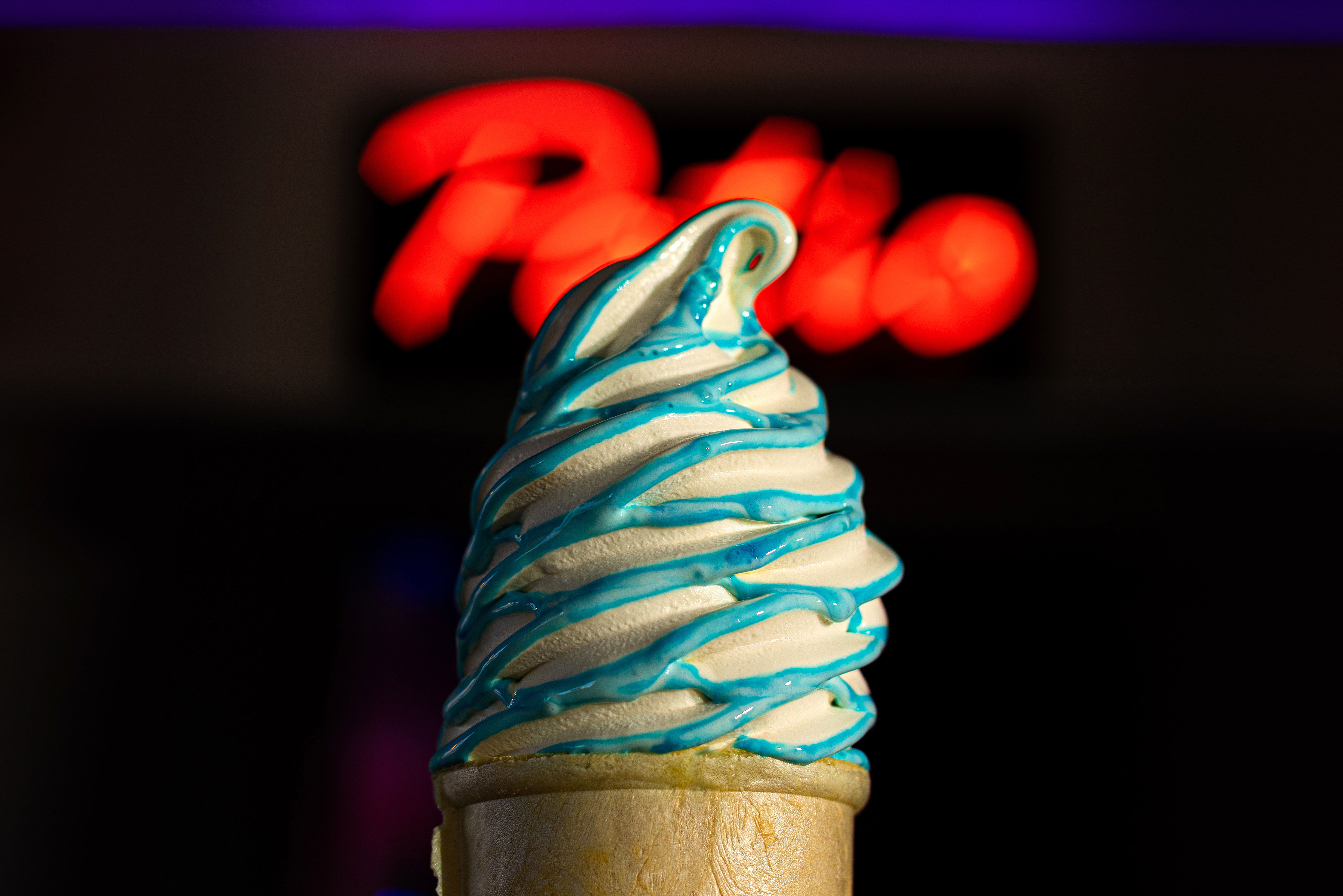Did You Know Portland Invented the Ice Cream Cone Machine?

Image: Michael Novak
Here's how the story goes: at the St. Louis World’s Fair in 1904, an ice cream seller ran out of paper cups. He turned to a nearby waffle vendor, folded the crispy cake into a portable dairy delivery device, and invented ... the ice cream cone.
But if you want to know how this crispy cornucopia conquered the masses, that tale starts in Portland—a city where ice cream has been serious business since the 1860s.
Stumptown’s craving for the cold stuff predates mechanical refrigeration; back then, creamers harvested ice stalactites in the spring from caves near Mount Adams and shipped them down the Columbia River for storage in sawdust-insulated city warehouses. Strawberries set the flavor of choice; vanilla and chocolate were also on trend.
By the 1870s, ice cream sales allowed Portland’s original Candy Man—fruit and sweets merchant (and later, banking and real estate mogul) Frank Dekum—to buy an entire city block of his own. (His building on SW Third Avenue still stands.) High-society charities milked ice cream’s appeal for fundraisers. And you couldn’t throw a rock without hitting a “refreshment saloon”
selling ice cream, bonbons, and oysters: three seemingly incongruent markers of civility in a muddy Wild West trading outpost transitioning into a genteel city fit for ladyfolk.
Ice cream saloons—places where only zero-proof indulgences were on offer—provided daytime havens for the city’s emerging polite society, separate from the ruffian nonsense one might encounter at, say, Sutton’s Saloon at First and Morrison, which sold booze next to an indoor shooting range. In 1867, the local Good Templars advertised theirs in the Oregonian as a bastion of sobriety—sweet words in a city with an active Women’s Christian Temperance Union.
Enter Frederick A. Bruckman. The Illinois creamery man moved to Portland in 1906, taking a job at the Weatherly Creamery Company. With Prohibition looming, Bruckman knew that opportunity was (as the saying went) the cream of time. He’d seen World’s Fair-esque novelty cones elsewhere in the Northwest, but found them fragile and far from delicious.
Bruckman’s idea was to mass-produce a sturdier sugar cone, one that could travel and wouldn’t stick to a machine. His cones had to taste good and also have nutritional value. And he wanted them to be affordable; in an interview with (sadly, now-defunct) Western Confectioner Magazine, he described a product “within reach of the child who had only an occasional nickel to spend for sweets.” In 1908, still without a winning design, Bruckman opened Pacific Coast Cone Co on SE Eighth and Salmon, a block from today’s White Owl Social Club.
Bruckman’s aha moment was still four years away. Inspiration came from watching his wife make timbale cases, which involved carefully pulling a cup-shaped mold from each pastry shell. He also studied the engineers then constructing “a big bridge” (likely the Hawthorne Bridge, completed in 1910). According to his biography, Bruckman “heard them say something about the big steel cross bars adding strength to the complete structure.” The embossed cross-hatch waffle anatomy of Bruckman’s resulting cone added structural integrity, allowing the molds to be removed without damage. On July 20, 1912, following a record-breaking heat wave, Bruckman filed his “Ice-Cream Cone Machine” with the US Patent Office.
By 1915, his machines—“the altar of man’s ambition,” fawned Western Confectioner—produced nearly a billion cones in one year. Bruckman retired a wealthy man in 1919, selling his patent and company to Nabisco in 1928 and retiring to a Tudor-style mansion on Mount Tabor.
Today, Bruckman’s work lives on in Nabisco-branded Comet Cones, ostensibly still prepared using his original recipe, or one similar. Reviews remain effusive: in 2012, Saveur Magazine named it America’s best-tasting sugar cone. And Portland, of course, remains America’s best place to fill it.




